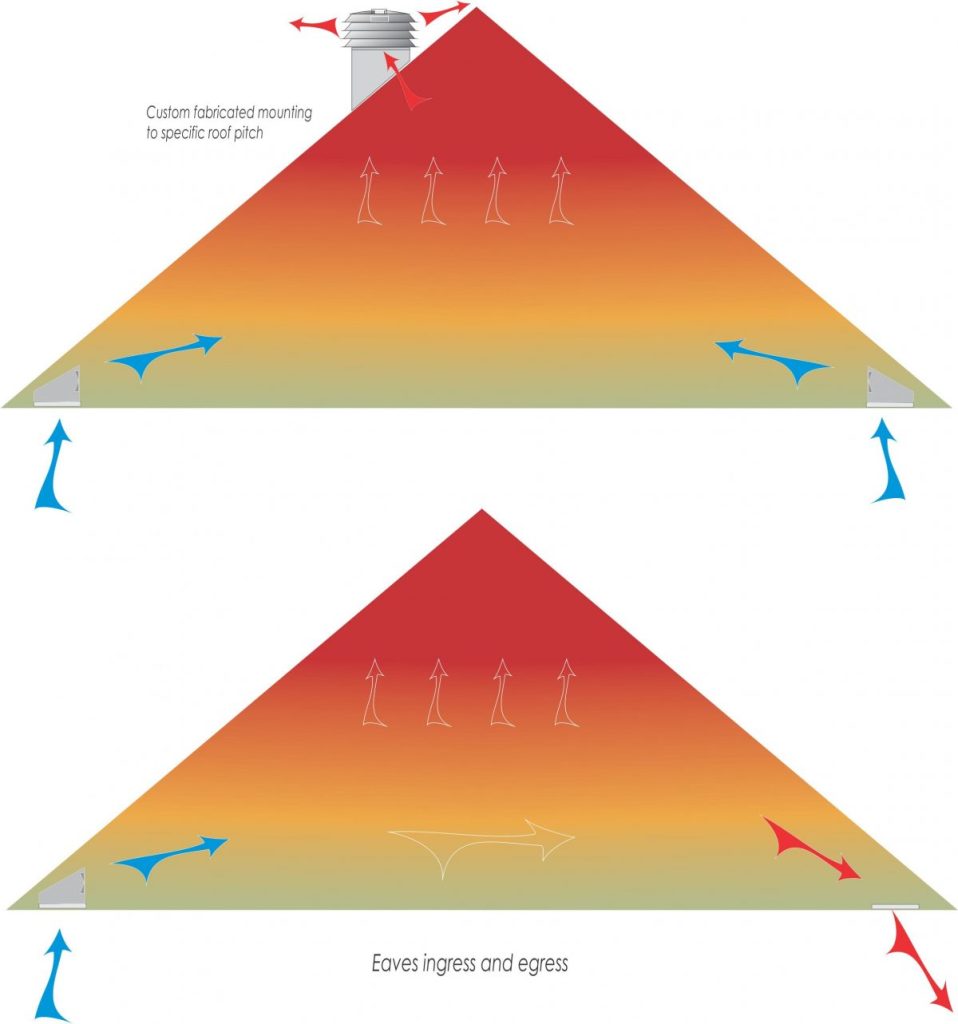Eaves Vents
Eaves vents need to be,
- Well suited to coastal areas
- Easy removal for cleaning
- Easy to install
- Research shows that efficient roof ventilation is dictated by air ingress and not egress. published 10/02/2022
- Available in range of colours
Point of view
A fan on the roof to extract the hot air out is not the best approach especially when considering that all roof items on a building require periodical inspection.
Having a motorised fan at the top of the roof is both impractical and inefficient.
Electric motors operating above 60 degrees will have an early failure rate. Reason being that electric motor manufacturers will not suggest, or guarantee operation in 60+ degree temperatures.
The average internal roof temperature at the top is 68 degrees.
Whether the roof ventilator be passive or powered, the air ingress at the eaves, as well as heat egress will dictate overall efficiency.
A Condor I&E Series eaves vents provide positive ingress of ambient cool air into the roof cavity.
This allows pressure displacement to push out the hot air out of a passive/static vent at the top much the same way as a hot water system has the hot water discharging at the top of the storage tank.
The Condor I&E Series Eaves Vents also provide efficient air ingress necessary to improve the air flow in the roof attic area. This can also be speed/ flow controlled.
Availability
Whether solar powered 12vdc or 240vac, the Condor IE eaves vent will fit all eaves over 300mm
Be mindful that the heat purge cycle is in the evening so whatever you install needs to function of in the evening.
Solar will not do it unless you go to the extra expense which renders the exercise complicated and impractical.
Give consideration to the design and performance of the eaves vent.
BAL criteria is applied to high fire risk areas.
Choosing eaves vents on aesthetic acceptability, or cost, may have you end up with no more than a dust trap.
Minimal resistance is the criteria to be used.
Variations to a theme
It is also possible to ventilate a roof void via the eaves vents exclusively by designing the ingress to egress dynamics of the roof void.
Pressure has no allegiance to direction so displacement can be initiated through the ingress at the eaves and egress via passive roof ventilator.
The laminar flow keeps the insulation cooler by reducing energy storage which allows the roof to cool of an evening.
During the winter, heat trapped in the upper regions can be redirected into the rooms below and thus saving on winter heating costs.
Considerations
Don’t get caught up in the illusion of energy efficiency to the extent that the fundamental aim of the exercise is lost.
Improving the end result through performance so as to gain maximum potential at minimum cost.
It goes without saying, if you find a better product use it!
Made in Australia should not be a consideration unless quality is same, same, and not different.
Condor 12vdc and 240vac eaves vents are fully fabricated in 304 & 316 stainless steel, have a 6 year warranty on the bearing fan motor, and a 20 year warranty on the vent itself.


Condor eaves vents are are fabricated in stainless steel and resin coated to colour
Natural Intake (atmospheric)
Standard Sizes in mm with white or brushed stainless frames
450 x 550
500 x 150
300 x 300
300 X 170
Powered Intake (12vdc) or (240vac)
200 x 150
200 x 200
Aim
To encourage continuity of air flow trough the area.
Custom sizes and colours also available

The retention or heat in the upper areas of the roof can be advantageous if the roof vent can be closed off and heat directed to the rooms below with a suitable air transfer system such as the

